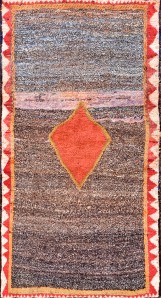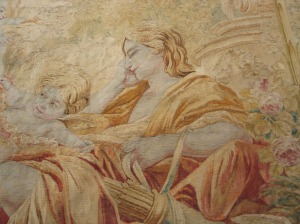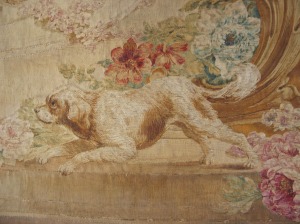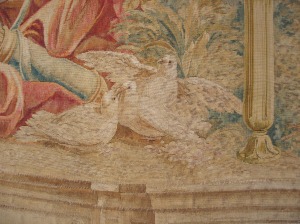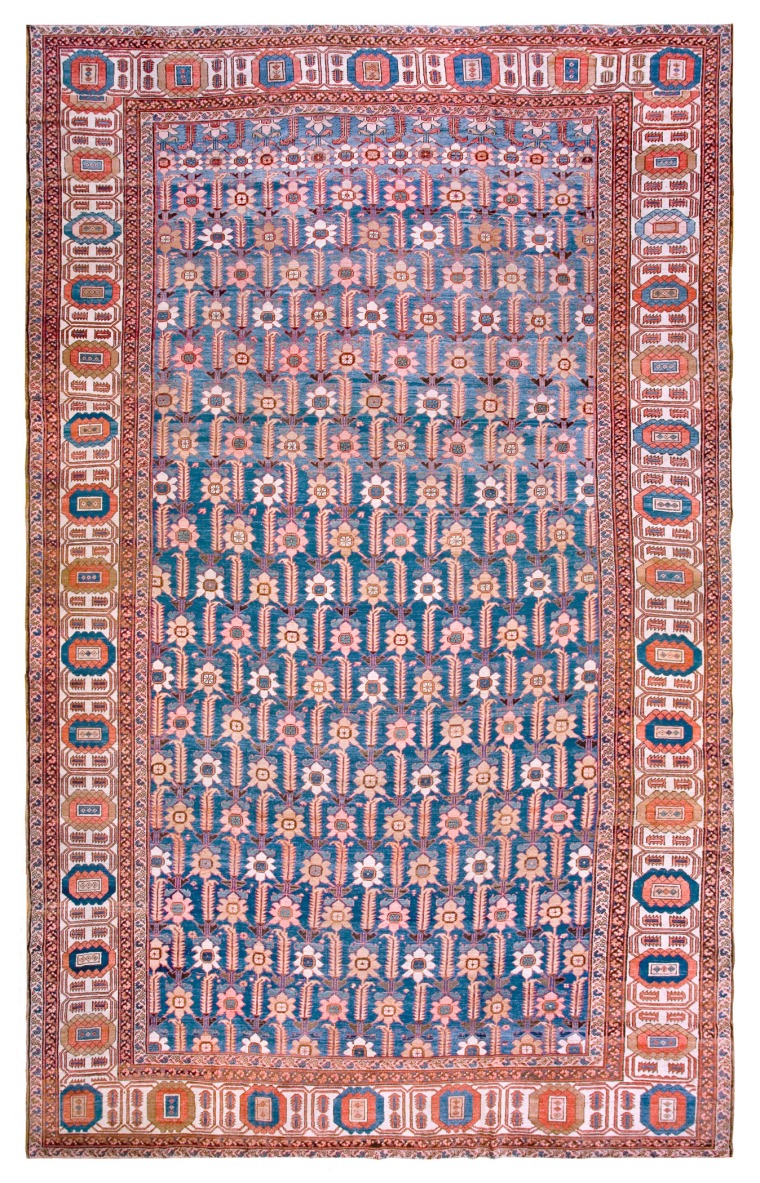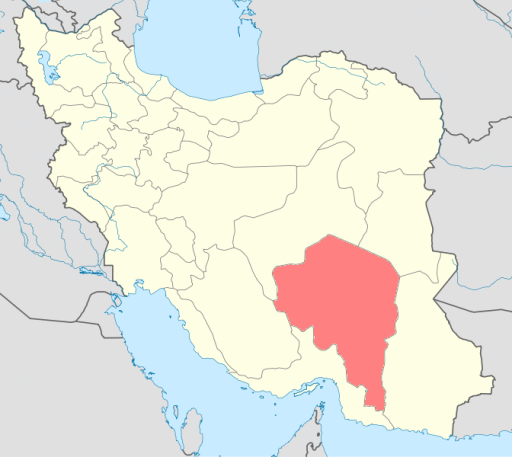Post by: Katrina Mauro
 Beyond the physical labor that is put into weaving a rug, is the story that is told through the art. This film, while not a documentary, does document both of these aspects of rug making, interweaving the processes and materials of creation with the stories and events that aid in their artistry.
Beyond the physical labor that is put into weaving a rug, is the story that is told through the art. This film, while not a documentary, does document both of these aspects of rug making, interweaving the processes and materials of creation with the stories and events that aid in their artistry.
To introduce this story, an elderly couple argues over who will clean the Gabbeh rug on the way to the stream. the woman admires the beauty of the Gabbeh and asks it’s story. With this question a young woman appears, Gabbeh, she begins to tell her (the rugs) story. This forshadowing is explained by the elderly man who wants to wash the Gabbeh. “As soon he sees you he forgets me”, his wife says to the Gabbeh. His response to this comment is, “Miss Gabbeh she is jealous of herself.”
Her people are of the Ghashgaie tribe, who never stay in one place long. She tells how she fell in love w a horseman, a reference to the horseman on the carpet. As the story continues the link is made between the elderly couple and the young woman’s story. She is the weaver of the Gabbeh, the elderly woman. She and her husband both admire their story still, through the piece of art that tells it.
The film takes a strange turn in some parts, where it is as though the viewer becomes incorporated in it. A teacher tries to teach you the importance of color and where it comes from. He pulls the colors straight from natural elements as children call the name of the color. A quick explanation of primary and secondary color through nature follows. There is an obvious connection of this tribe to nature, color, and life cycles – all of which can be seen through the continuous weavings seen throughout the film.
Gabbeh style blankets, carpets, and kilims are shown in the tents the tribe erects at each camp ground, as well as while traveling. Most seen have typical diamonds or checkers in crude repetitive patterns and bright basic colors. An unfinished carpet can be seen on a loom which is constructed like a tripod made of branches, with a stretcher across the front 2 legs where the weaver would sit. A woman quickly weaves the fields in front of her.
The viewer in this film really does get a feeling for the work it takes to produce a complete carpet from beginning to end, starting with the sheering of the sheep and spinning of yarn. In this clip flowers are collected , boiled, and wool yarn put in the pots to soak in these colors. Afterwards, the piles of colored yarn are laid out in the sun on the beach to set the nautral dyes (women run to collect it when rain begins to fall).
Later into the clip a marriage ceremony is prepared for. Piles of colorful wool surround women as they weave and stamp down their work. Drums begin the ceremony, and the rhythm of this music imitates the stamping noise as images of dancers are woven into the rug.
The importance of color to life (love, emotions, man, woman, child, birth, death, etc) is emphasized throughout the film in the weavings of the people. New colors are introduced to the yarn, and new elements to the carpets, as the story unfolds.
By the end of the movie, the connection of the elderly couple to the carpet’s story is fully realized, as they are the couple woven into the rug, riding away on horseback.
*To view these rugs on Rahmanan Antique & Decorative Rugs website, please use the following links:
http://www.rahmanan.com/inventory/show/19182/
http://www.rahmanan.com/inventory/show/19196/
http://www.rahmanan.com/inventory/show/19202/
http://www.rahmanan.com/inventory/show/18898/
*Original post by Katrina Mauro can be viewed on DOTS.connected

